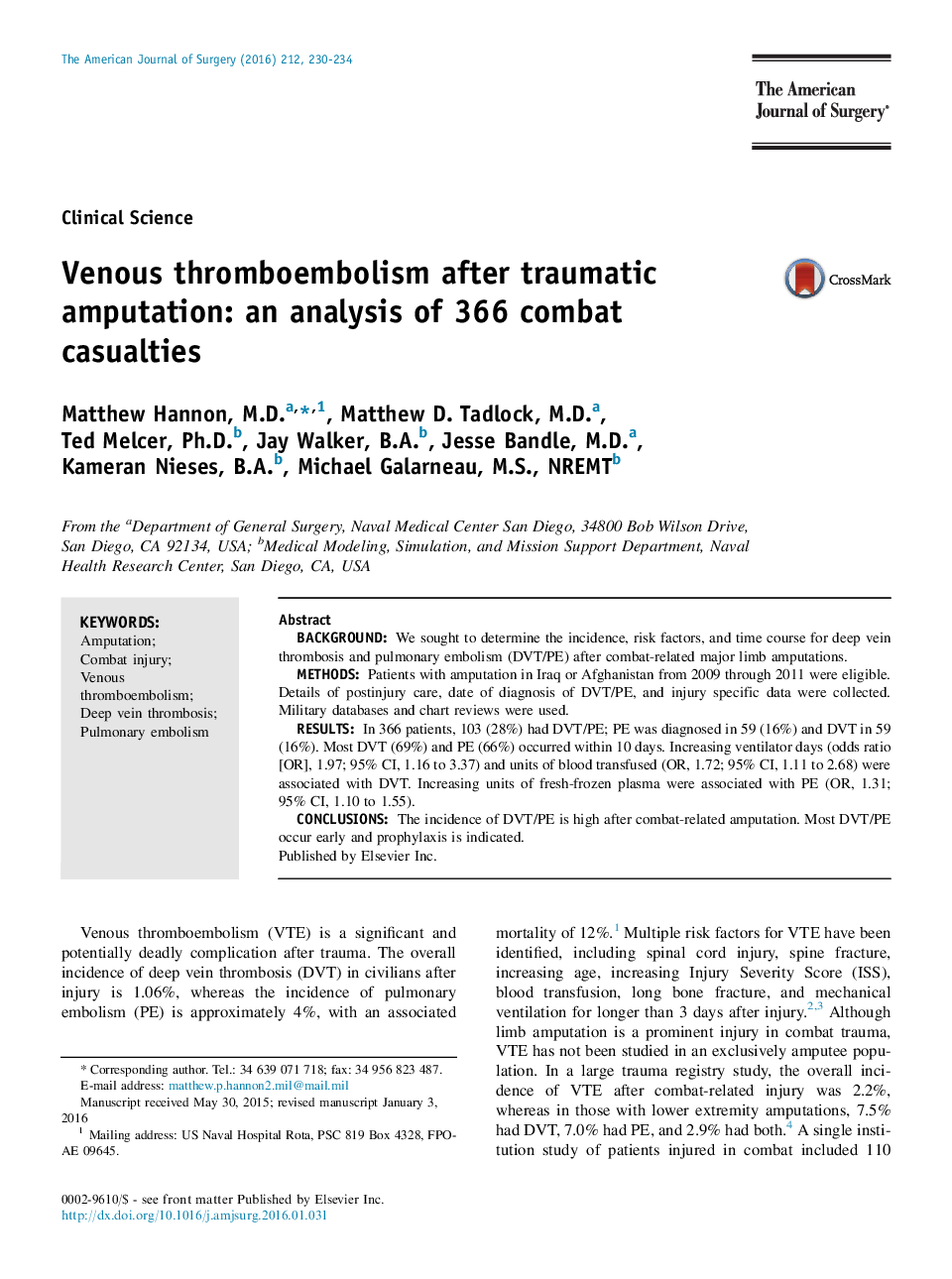| Article ID | Journal | Published Year | Pages | File Type |
|---|---|---|---|---|
| 6250276 | The American Journal of Surgery | 2016 | 5 Pages |
BackgroundWe sought to determine the incidence, risk factors, and time course for deep vein thrombosis and pulmonary embolism (DVT/PE) after combat-related major limb amputations.MethodsPatients with amputation in Iraq or Afghanistan from 2009 through 2011 were eligible. Details of postinjury care, date of diagnosis of DVT/PE, and injury specific data were collected. Military databases and chart reviews were used.ResultsIn 366 patients, 103 (28%) had DVT/PE; PE was diagnosed in 59 (16%) and DVT in 59 (16%). Most DVT (69%) and PE (66%) occurred within 10Â days. Increasing ventilator days (odds ratio [OR], 1.97; 95% CI, 1.16 to 3.37) and units of blood transfused (OR, 1.72; 95% CI, 1.11 to 2.68) were associated with DVT. Increasing units of fresh-frozen plasma were associated with PE (OR, 1.31; 95%Â CI, 1.10 to 1.55).ConclusionsThe incidence of DVT/PE is high after combat-related amputation. Most DVT/PE occur early and prophylaxis is indicated.
